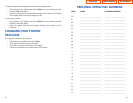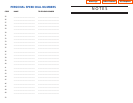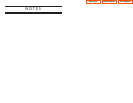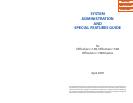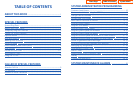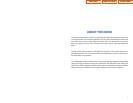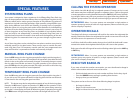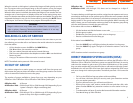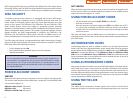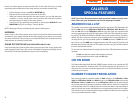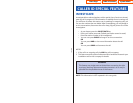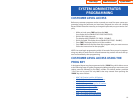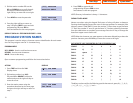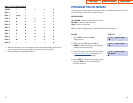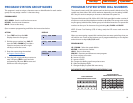
NOT VERIFIED
When set for this option the user must enter an account code for all outgoing calls,
but the account code is not verified against the system list. Non verified account
codes can contain the digits 0~9, * and #.
USING FORCED ACCOUNT CODES
• Lift the handset and press the ACCT CODE key or dial 47.
• Enter the account code.
• Press the account code button again, press TRSF or hookflash (on an SLT).
If a correct code is entered, you will hear a dial tone and you can make an
outside call in the usual manner. If an incorrect code is entered, the station
returns error tone.
This code will always print on SMDR reports. For information on entering and
changing forced account codes, see the system administrator programming sec-
tion of this book.
AUTHORIZATION CODES
Authorization codes are used to validate a station user and give permission to
make a call.These four digit authorization codes can be either forced or optional,
but if used,are always verified from a system list of 500 entries on the OfficeServ
500 M or L version, the OfficeServ 7100, OfficeServ 7200 and OfficeServ 7400,
250 entries on the OfficeServ 100 and OfficeServ 7100. Each authorization code
has an associated class of service.When the code is entered, the class of service is
changed to that of the authorization code.
USING AUTHORIZATION CODES
After going off-hook, the station user must dial Q followed by a four digit authori-
zation code. If you enter a correct code, you will hear confirmation tone and then
receive a dial tone and you can make an outside call in the usual manner.The sta-
tion then follows the dialing class for that authorization code.If you enter an incor-
rect code, the station returns error tone.This code may or may not print on SMDR
reports depending on SMDR programming.
USING THE TIE LINE
OUTGOING
Your office can be connected to another system with a tie line. Use this line to
make calls to stations in the other system. If programming allows, you can access
76
NOTE: Outgoing DISA calls are controlled by the dialing class of the station identi-
fied by the security code.The DISA line must have disconnect supervision from the
central office.Insist that this service is verified by your installation/service company.
DISA SECURITY
A common practice among hackers is to repeatedly dial a known DISA access
number (usually with a computer) and try a different passcode each time. The
hacker hopes to eventually chance upon the correct passcode and thus gain
access to your system. The OfficeServ 100, OfficeServ 500, and OfficeServ 7000
Series security feature counts the number of sequential incorrect passcode
attempts.If a certain number is reached,DISA is disabled and the system sends an
alarm to designated display stations. The number of passcode attempts and the
disable duration are both programmable. In addition, the OfficeServ 100,
OfficeServ 500, and OfficeServ 7000 systems will print an SMDR record (a cus-
tomer-provided printer is required) each time an incorrect passcode is entered.
The DISA alarm will ring for a programmable time before canceling the ringing;
however, the DISA alarm display will remain until the alarm is cleared.To clear the
DISA alarm, follow the following procedure:
• Lift the handset and dial 58.
• Enter the DISA alarm passcode (see your service company).
• Replace the handset.
WARNING
As it is impossible to prevent unauthorized access to your telephone sys-
tem by hackers,we suggest that you do not turn the DISA feature on unless
you intend to use it. If you do use this feature, it is good practice to fre-
quently change passcodes and periodically review your telephone records
for unauthorized use.
FORCED ACCOUNT CODES
VERIFIED
When set for this option the user must enter an account code for all outgoing calls.
The account code entered will be verified from a system list.Forced verified codes
can contain the digits 0~9.
OfficeServ 500 & 7100 999 entries
OfficeServ 100 500 entries
OfficeServ 7200 & 7400 999 entries
Home Page
Table of Contents
System Admin



